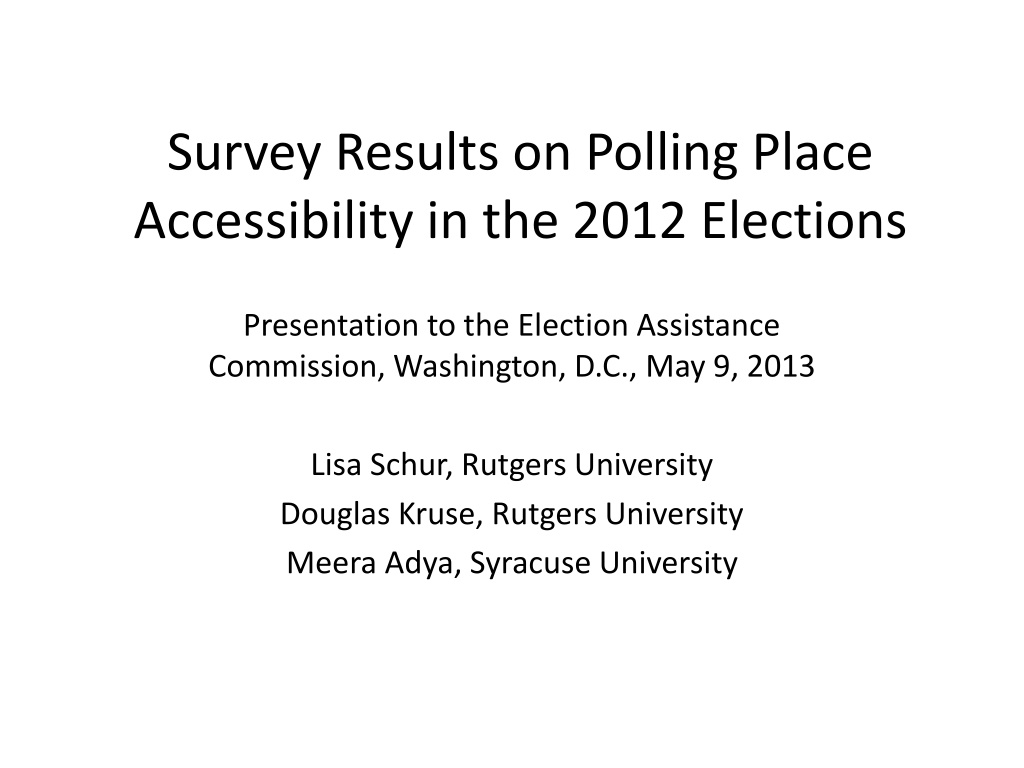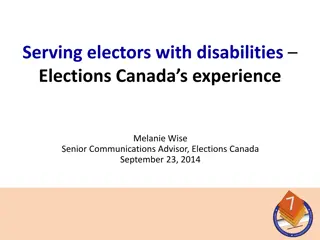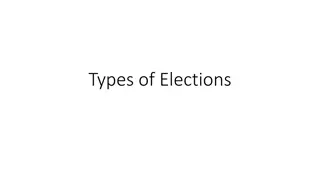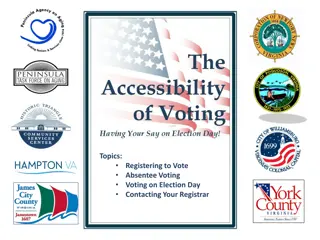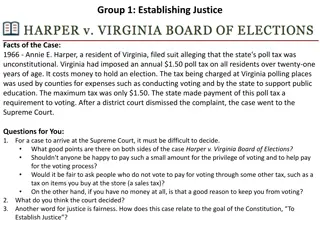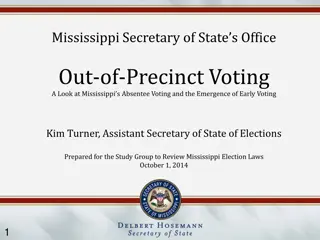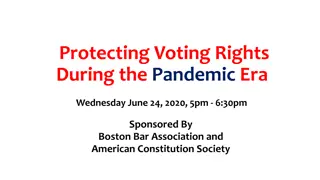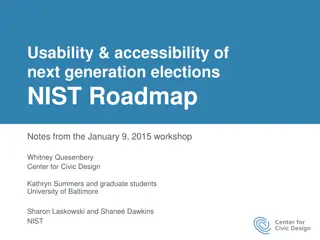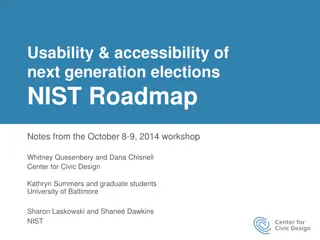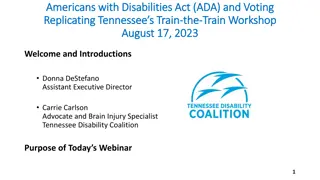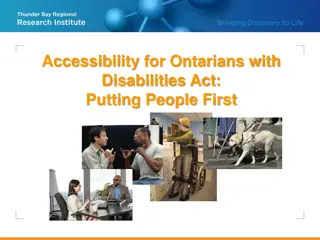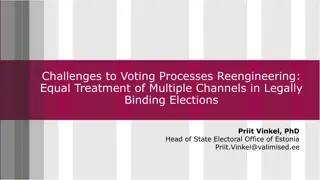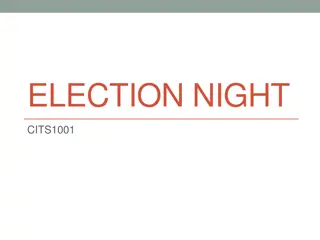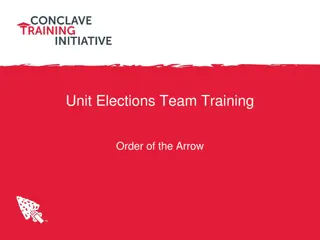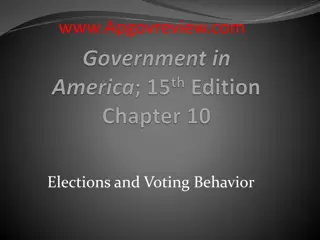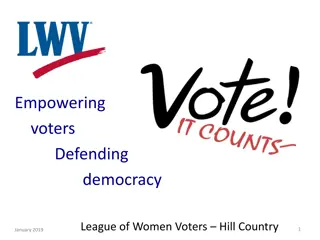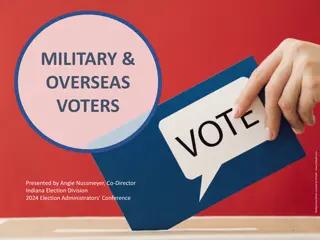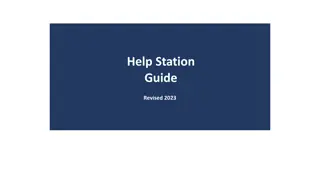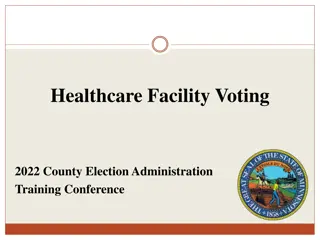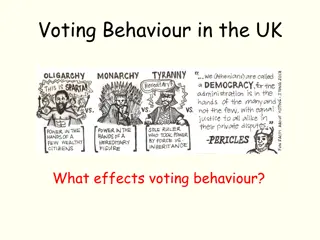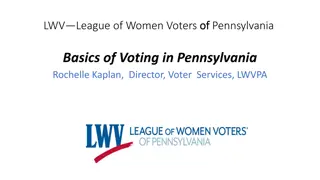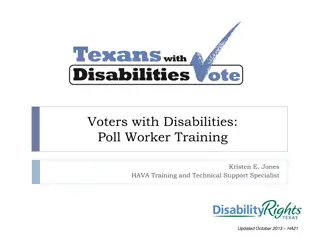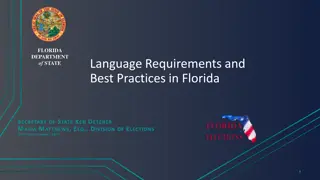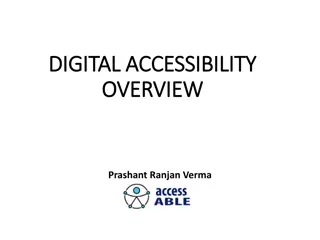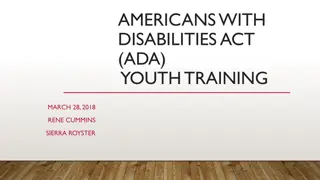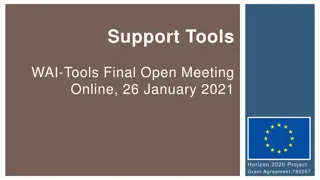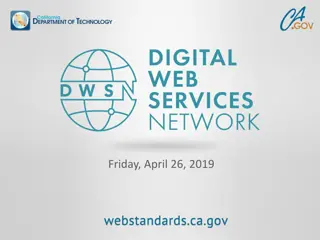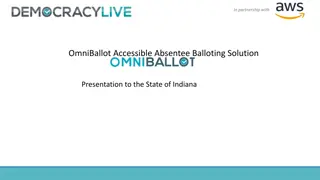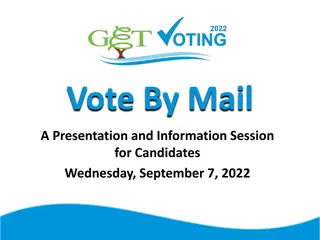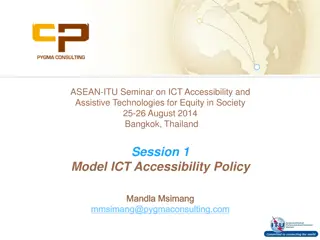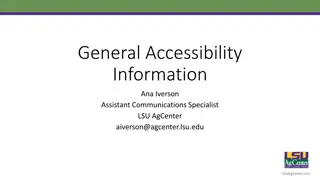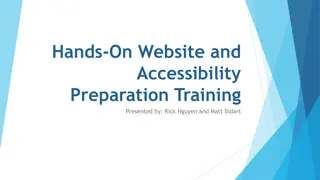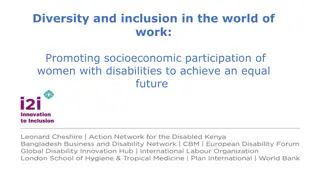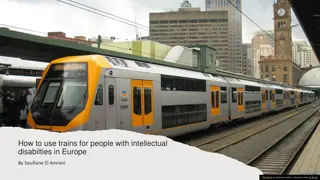Voting Accessibility Challenges Faced by People with Disabilities in the 2012 Elections
Low voter turnout among individuals with disabilities in the 2012 elections was influenced by inaccessible polling places. Results from a post-election survey highlight difficulties faced by voters with disabilities, including issues with finding and accessing polling places, reading ballots, and operating voting machines. The survey emphasizes the need for improved accessibility to ensure all individuals can exercise their right to vote effectively.
Download Presentation

Please find below an Image/Link to download the presentation.
The content on the website is provided AS IS for your information and personal use only. It may not be sold, licensed, or shared on other websites without obtaining consent from the author. Download presentation by click this link. If you encounter any issues during the download, it is possible that the publisher has removed the file from their server.
E N D
Presentation Transcript
Survey Results on Polling Place Accessibility in the 2012 Elections Presentation to the Election Assistance Commission, Washington, D.C., May 9, 2013 Lisa Schur, Rutgers University Douglas Kruse, Rutgers University Meera Adya, Syracuse University
Voter turnout is generally low among people with disabilities Disability turnout gap of 4-21 percentage points in 12 surveys over 1992-2010 Lower turnout is only partly explained by standard voting predictors: resources (education and income), recruitment, and feelings of political efficacy => Inaccessible polling places may play a role, both by making voting more difficult and possibly sending the message that people with disabilities are not welcome in the political sphere
2012 post-election survey The Election Assistance Commission provided funds through Research Alliance for Accessible Voting (RAAV) for a nationally representative household survey on voting experiences following 2012 elections Total sample of 3,022, stratified to oversample people with disabilities so there are: 2,000 people with disabilities 1,022 people without disabilities Survey was conducted by professional survey firm, Survey Technology and Research Voting questions based on U.S. Census, with added questions on voting difficulties Reported experiences by voters complement the GAO reports on potential barriers in polling places
Disability measure was based on Census Bureau questions # in sample 2000 501 410 742 1347 289 857 486 893 1590 Any disability Hearing impairment Visual impairment Cognitive impairment Mobility impairment Wheelchair users Cane, crutches, or walker Difficulty inside home Difficulty going outside alone Limited in major life activities
Reported difficulties among those voting at polling place in 2012 Disability 6% 4% 8% No disability 2% 0% 4% 1. 2. 3. Finding or getting to polling place Getting inside polling place (e.g., steps) Waiting in line 4. Reading or seeing ballot 5. Understanding how to vote or use voting eqt. 10% 6. Communicating with election officials 12% 1% 1% 1% 2% 7. Writing on the ballot 8. Operating the voting machine 9. Other type of difficulty Any of above 5% 1% 4% 30% 0% 1% 1% 8%
Examples of polling place difficulties from verbatim descriptions Finding or getting to polling place: hard to get a ride, polling place not well marked, polling place moved Getting inside polling place: steps, walking distance Operating voting machine: hard to pull handle, hard to see, machine too high, machine malfunctioned, didn t know how to operate
Polling place difficulties by type of disability Any type of voting difficulty in 2012 among those with Hearing impairment Visual impairment Cognitive impairment Mobility impairment Wheelchair users Cane, crutches, or walker Difficulty inside home Difficulty going outside alone Limitation in major life activities 27% 44% 43% 31% 41% 28% 49% 43% 34% => Difficulties were highest among those with visual, cognitive impairments, and difficulty with activities inside home
Need for assistance at polling place Disability No disability Needed any assistance if voted at polling place in 2012 If yes, who provided assistance Election officials Family member Friend Home care aide Other Needed but none provided 30% 11% 42% 42% 9% 1% 4% 3% 72% 19% 2% 0% 5% 2%
Use of extra features or devices to vote in 2012 If have disability, used extra features or devices If yes: What features or devices Large display Magnifier or visual aid Earphones Seating/lowered machine Other (special keypad, automark) Features or devices were set up and ready to use Election officials knew how to set up and use features or devices 7% 58% 33% 10% 2% 1% 75% 97%
Treatment by election officials Disability No disability Election officials were: Very respectful Somewhat respectful Neither respectful nor disrespectful Somewhat or very disrespectful 86% 8% 85% 7% 3% 5% 3% 3% => No difference by disability status
Overall ease or difficulty of voting at polling place Disability 75% 18% 1% 3% 3% No disability 87% 11% 1% 1% 1% Very easy Somewhat easy Neither easy nor difficult Somewhat difficult Very difficult => Most people with disabilities report voting was easy, but 6% report it was difficult (higher than among people without disabilities)
Voting by mail Disability 24% No disability 16% If voted in 2012, cast vote by mail If voted by mail: Any difficulty in reading or filling out mail-in ballot Needed assistance in completing mail-in ballot 13% 2% 11% 0%
If did not vote at polling place in 2012, but did so sometime in past 10 years Any type of difficulty in voting at polling place among those with Disability No disability Pattern of difficulties very similar to those for 2012 voters 29% 10%
If did not vote at polling place in past 10 years, would expect to have difficulties in voting Disability 2% 13% 7% 3% No disability 1. 2. 3. 4. Finding polling place Getting to polling place Getting inside polling place (e.g., steps) Waiting in line 0% 0% 0% 0% 4. Reading or seeing ballot 5. Understanding how to vote or use voting eqt. 10% 6. Other difficulty recording vote 6% 0% 0% 1% 4% 7. Any other problem Any of above 10% 40% 0% 1%
Preference for how to vote Asked of all respondents (voters and non-voters) If you wanted to vote in the next election, how would you prefer to cast your vote? In person at polling place By mail On the Internet By telephone Don t know Disability No disability 58% 25% 10% 5% 2% 68% 14% 16% 2% 1% => People with disabilities are less likely to prefer voting at polling place, but still a majority want to do so
Overall: Some results are very positive, such as no difference in treatment by election officials between people with and without disabilities, Nonetheless people with disabilities are still more likely to report and expect difficulties in exercising the right to vote. Questions and feedback are welcome!
